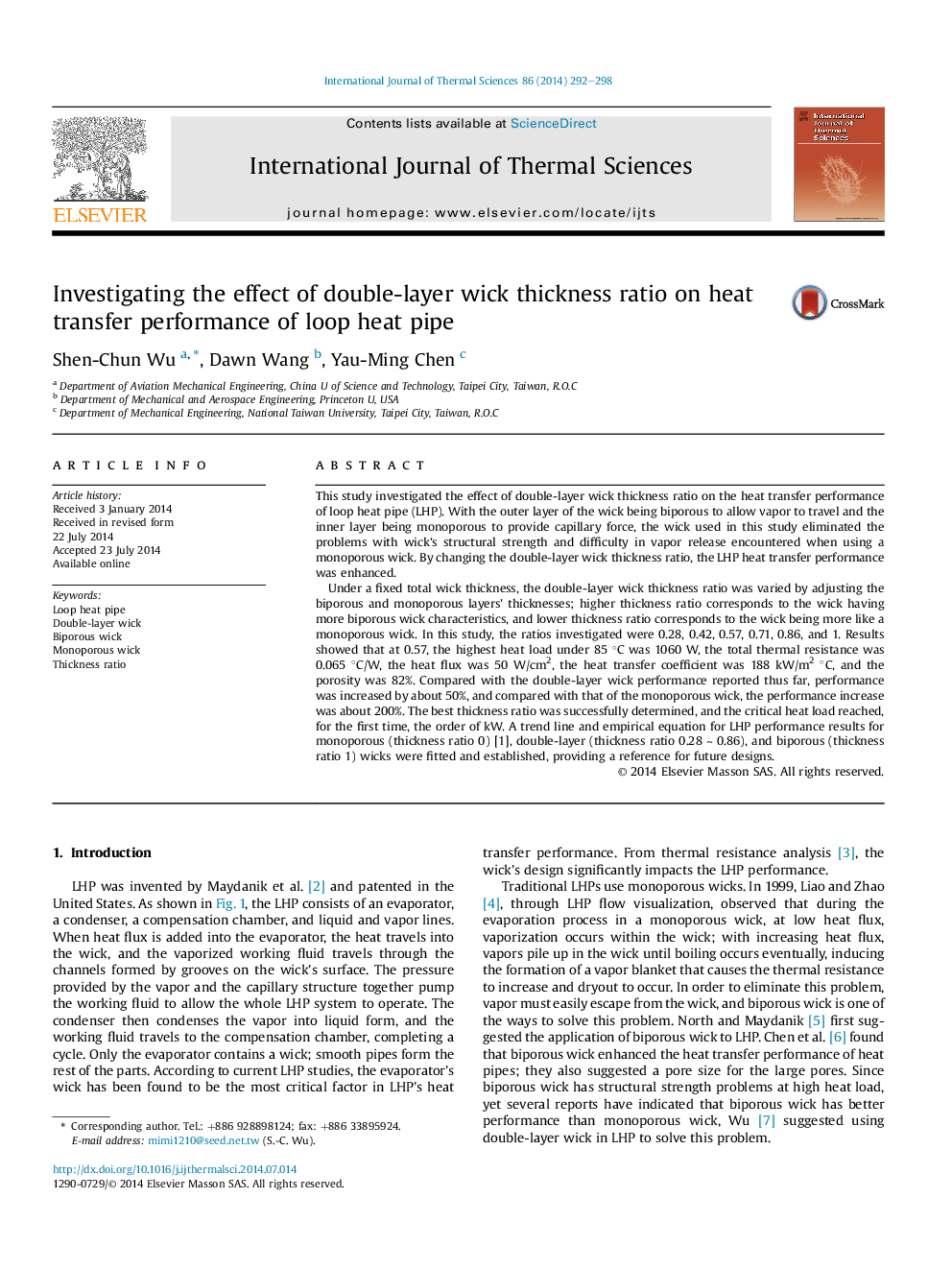| Article ID | Journal | Published Year | Pages | File Type |
|---|---|---|---|---|
| 668159 | International Journal of Thermal Sciences | 2014 | 7 Pages |
Abstract
Under a fixed total wick thickness, the double-layer wick thickness ratio was varied by adjusting the biporous and monoporous layers' thicknesses; higher thickness ratio corresponds to the wick having more biporous wick characteristics, and lower thickness ratio corresponds to the wick being more like a monoporous wick. In this study, the ratios investigated were 0.28, 0.42, 0.57, 0.71, 0.86, and 1. Results showed that at 0.57, the highest heat load under 85 °C was 1060 W, the total thermal resistance was 0.065 °C/W, the heat flux was 50 W/cm2, the heat transfer coefficient was 188 kW/m2 °C, and the porosity was 82%. Compared with the double-layer wick performance reported thus far, performance was increased by about 50%, and compared with that of the monoporous wick, the performance increase was about 200%. The best thickness ratio was successfully determined, and the critical heat load reached, for the first time, the order of kW. A trend line and empirical equation for LHP performance results for monoporous (thickness ratio 0) [1], double-layer (thickness ratio 0.28 â¼Â 0.86), and biporous (thickness ratio 1) wicks were fitted and established, providing a reference for future designs.
Related Topics
Physical Sciences and Engineering
Chemical Engineering
Fluid Flow and Transfer Processes
Authors
Shen-Chun Wu, Dawn Wang, Yau-Ming Chen,
